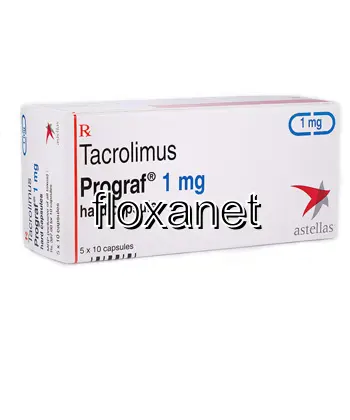| Package | Dosage | Price | Price per Dose | |
|---|---|---|---|---|
| Dosage: 0,5mg | ||||
| 90 pill | 0,5mg | AUD747.93 | AUD8.30 | |
| 60 pill | 0,5mg | AUD531.53 | AUD8.87 | |
| 30 pill | 0,5mg | AUD296.22 | AUD9.87 | |
| 20 pill | 0,5mg | AUD207.98 | AUD10.40 | |
| 10 pill | 0,5mg | AUD111.33 | AUD11.22 | |
| Dosage: 1mg | ||||
| 90 pill | 1mg | AUD1,050.47 | AUD11.68 | |
| 60 pill | 1mg | AUD752.13 | AUD12.54 | |
| 30 pill | 1mg | AUD443.29 | AUD14.75 | |
| 20 pill | 1mg | AUD329.83 | AUD16.47 | |
| 10 pill | 1mg | AUD184.87 | AUD18.57 | |
| Dosage: 5mg | ||||
| 20 pill | 5mg | AUD1,002.15 | AUD50.07 | |
| 10 pill | 5mg | AUD560.94 | AUD56.08 | |

Tacrolimus Description
Understanding Tacrolimus
Tacrolimus is a potent immunosuppressive medication primarily used to prevent organ rejection in transplant patients. It belongs to the class of drugs known as calcineurin inhibitors. Tacrolimus works by inhibiting the activity of T-lymphocytes, which are crucial components of the immune response. By doing so, it reduces the likelihood of the body's immune system attacking a transplanted organ, ensuring better graft survival. This medication is typically prescribed after kidney, liver, or heart transplants, making it an essential part of post-transplant care.
Formulation and Dosage
Tacrolimus is available in various formulations, including capsules, which are the most common, as well as topical ointments for specific dermatological conditions. The capsules are usually taken orally, either once or twice daily, depending on the prescribing doctor’s instructions. Dosage varies according to individual needs, transplant type, and response to treatment. Regular monitoring of blood levels of tacrolimus is crucial to avoid toxicity and ensure therapeutic effectiveness. Patients are often advised to take the medication consistently at the same times each day for optimal results.
Benefits of Tacrolimus
Tacrolimus is highly effective in reducing organ rejection rates. Its targeted mechanism helps maintain proper immune suppression without causing overly broad immunosuppression, which can predispose patients to infections. Many patients experience improved transplant outcomes and longer graft survival when using tacrolimus as part of their regimen. Additionally, it may be prescribed for certain autoimmune diseases where immune activity needs to be curtailed. Its effectiveness has made it a cornerstone drug in transplant medicine.
Potential Risks and Side Effects
Despite its benefits, tacrolimus carries a risk of side effects. Common adverse effects include headaches, tremors, high blood pressure, and kidney function impairment. Some patients may also experience neurological symptoms such as tingling or mood changes. Due to its immunosuppressive nature, tacrolimus increases susceptibility to infections, which require careful management. Less frequently, allergic reactions or liver function abnormalities can occur. Regular blood tests are essential to monitor for potential toxic effects and adjust the dosage accordingly.
Precautions and Interactions
Individuals prescribed tacrolimus should inform their healthcare providers about all other medications they are taking, as drug interactions are common. Medications like certain antibiotics, antifungals, and other immunosuppressants can influence tacrolimus levels, necessitating dose adjustments. Patients should avoid grapefruit and grapefruit juice, which can alter the drug’s metabolism. It's also important to inform healthcare professionals about any pre-existing health conditions, especially kidney or liver problems. Consistent medical follow-up is necessary to ensure safety and effectiveness of treatment.
Conclusion
In summary, tacrolimus remains a critical medication in the field of transplantation. Its targeted action provides significant benefits in preventing organ rejection, though it requires careful management due to potential side effects and drug interactions. Patients on tacrolimus should adhere strictly to their prescribed regimen and maintain regular medical checkups. When used properly, tacrolimus can greatly improve the outcomes of organ transplantation, contributing to better quality of life for recipients.

